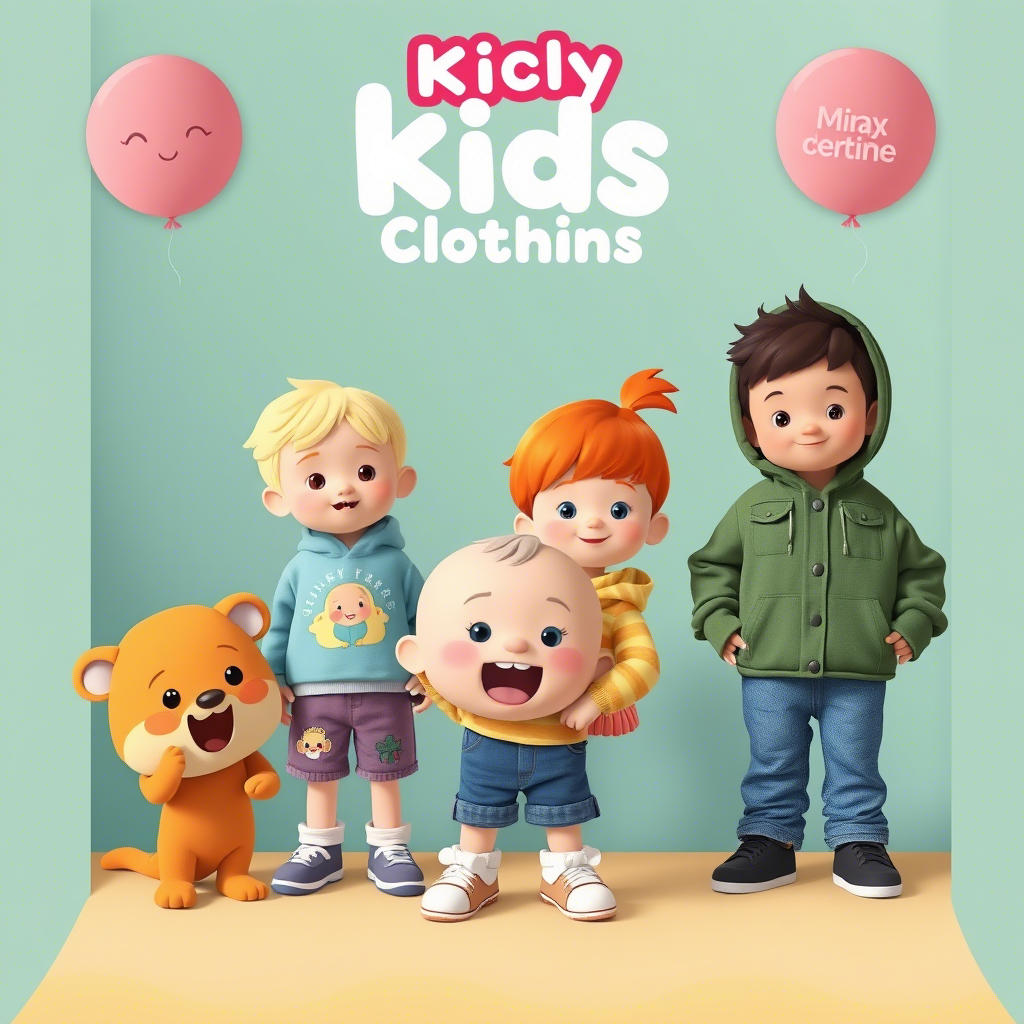Kids Clothing Suppliers: A Comprehensive Guide
The demand for kids’ clothing has seen a significant surge in recent years, driven by factors such as increasing parental spending on children’s apparel and the growing trend of fashion-conscious kids. As a result, the role of kids’ clothing suppliers has become more crucial than ever. These suppliers are not just providers of garments; they are partners in helping retailers and brands meet the evolving needs of their young customers.
In this article, we will explore the world of kids’ clothing suppliers, examining their importance, the challenges they face, and the opportunities available to them. We will also discuss the key considerations for retailers when selecting a supplier and provide insights into the latest trends shaping the industry.
Understanding the Kids’ Clothing Market
The kids’ clothing market is a dynamic and rapidly evolving sector. To succeed, suppliers need to stay abreast of the latest trends and consumer preferences. Some of the key trends currently influencing the market include:
- The growing demand for sustainable and eco-friendly clothing, driven by increasing awareness among parents about the environmental impact of their purchasing decisions.
- The rise of online shopping, which has transformed the way kids’ clothing is marketed and sold.
- The importance of comfort and practicality, as parents seek clothing that is both stylish and functional.
 The use of appealing designs and characters, such as cute cartoon characters, is a popular strategy among kids’ clothing suppliers to capture the attention of young consumers.
The use of appealing designs and characters, such as cute cartoon characters, is a popular strategy among kids’ clothing suppliers to capture the attention of young consumers.
Key Considerations for Kids’ Clothing Suppliers
To succeed in this competitive market, kids’ clothing suppliers must focus on several key areas:
- Quality and Safety: Ensuring that clothing meets or exceeds international safety standards is paramount. Suppliers must prioritize the use of high-quality materials and adhere to strict quality control processes.
- Design and Innovation: Staying ahead of the curve in terms of design and innovation is crucial. This includes incorporating the latest trends, using vibrant colors and appealing patterns, and creating clothing that is both fashionable and functional.
- Sustainability: As consumers become increasingly environmentally conscious, suppliers must adapt by offering sustainable and eco-friendly options.
The Role of Technology in Kids’ Clothing Supply
Technology is playing an increasingly important role in the kids’ clothing supply chain. From design and production to logistics and customer service, technology is helping suppliers streamline their operations and improve efficiency. Some of the key technologies being adopted include:
- Digital Printing: Allowing for the creation of complex and colorful designs without the need for large minimum order quantities.
- E-commerce Platforms: Enabling suppliers to reach a wider audience and provide a seamless online shopping experience.
- Supply Chain Management Software: Helping to optimize inventory management, shipping, and delivery.
Building Strong Relationships with Retailers
For kids’ clothing suppliers, building strong relationships with retailers is vital. This involves:
- Understanding Retailer Needs: Suppliers must work closely with retailers to understand their specific needs and preferences.
- Providing Excellent Customer Service: Responding promptly to inquiries, delivering high-quality products on time, and offering flexible payment terms are all essential.
- Offering Competitive Pricing: Suppliers must balance the need to offer competitive pricing with the requirement to maintain profit margins.
 Suppliers who can offer a range of stylish and seasonal clothing options, such as vibrant summer outfits with floral patterns, are well-positioned to meet the needs of retailers and their customers.
Suppliers who can offer a range of stylish and seasonal clothing options, such as vibrant summer outfits with floral patterns, are well-positioned to meet the needs of retailers and their customers.
Navigating the Challenges of the Kids’ Clothing Market
Despite the opportunities, the kids’ clothing market is not without its challenges. Suppliers must navigate issues such as:
- Compliance with Regulations: Ensuring that clothing meets the relevant safety and regulatory standards in different markets.
- Managing Inventory: Balancing the need to hold sufficient stock to meet demand with the risk of overstocking and the associated costs.
- Maintaining Profitability: Suppliers must manage their costs effectively while also investing in design, marketing, and other areas to stay competitive.
For more information on kids’ clothing products, you can visit https://lezonkids.com/boys-coat/ to explore a range of high-quality boys’ coats.
Sourcing Kids’ Clothing: What Retailers Should Look For
When selecting a kids’ clothing supplier, retailers should consider several key factors:
- Product Range and Quality: The supplier should offer a diverse range of high-quality products that meet the needs of the retailer’s target market.
- Reliability and Lead Times: Retailers need suppliers who can deliver products on time and to the required specification.
- Pricing and Payment Terms: Competitive pricing and flexible payment terms can help retailers manage their costs and improve cash flow.
 A well-stocked children’s clothing store with diverse outfits on display is a testament to the supplier’s ability to provide a wide range of products that appeal to different tastes and preferences. You can also check out other products on https://lezonkids.com/ to find the perfect fit for your store.
A well-stocked children’s clothing store with diverse outfits on display is a testament to the supplier’s ability to provide a wide range of products that appeal to different tastes and preferences. You can also check out other products on https://lezonkids.com/ to find the perfect fit for your store.
Conclusion
The kids’ clothing market is a complex and dynamic sector, with suppliers playing a critical role in meeting the evolving needs of retailers and consumers. By focusing on quality, design, sustainability, and technology, suppliers can stay ahead of the curve and capitalize on the opportunities available. For retailers, selecting the right supplier is crucial, and involves careful consideration of factors such as product range, reliability, and pricing. By understanding the needs of the market and working together, suppliers and retailers can succeed in this exciting and fast-paced industry.

Comments